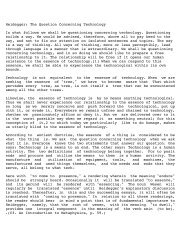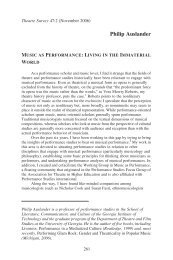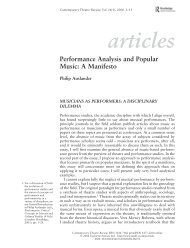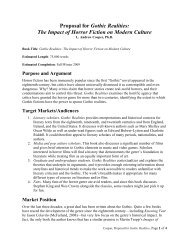INTERACTION DESIGN PRINCIPLES FOR INTERACTIVE ...
INTERACTION DESIGN PRINCIPLES FOR INTERACTIVE ...
INTERACTION DESIGN PRINCIPLES FOR INTERACTIVE ...
Create successful ePaper yourself
Turn your PDF publications into a flip-book with our unique Google optimized e-Paper software.
5.5.2 New Technologies<br />
For relatively new technological entrants into the iTV realm such as mobile<br />
devices, very little has been done to study effective interface design on these platforms,<br />
where new design issues arise. The screen on most cellular phones and PDAs, for<br />
example, is relatively square compared to that of a television screen or computer monitor,<br />
comprising of a different aspect ratio to design for. Screen resolution is also relatively<br />
poor, and very few words can be displayed on the screen at once. Because of this,<br />
excessive scrolling is perhaps even more irritating on a mobile device than it is on a<br />
television monitor. Finally, mobile devices do not yet have ubiquitous support for<br />
applications developed in Java or Flash, for example, and platforms in which content can<br />
be developed for mobile devices are still very limited. Together, these factors make it<br />
difficult for designers to effectively repackage iTV materials for mobile technologies.<br />
Donald Norman notes that “Each time a new technology comes along, new<br />
designers make the same horrible mistakes as their predecessors. Technologists are not<br />
noted for learning from the errors of the past. They look forward, not behind, so they<br />
repeat the same problems over and over again. Today’s wireless devices are appalling”<br />
(2002). The array of mobile interfaces in Figure 5.46 demonstrates that there are many<br />
ways to design for this medium.<br />
A key challenge to designing for the relatively small screens of mobile devices is<br />
the display of Web content and text legibility. Human-computer interaction specialists are<br />
currently working on zooming techniques to address this problem. Patrick Baudisch, an<br />
HCI research scientist at the Visualization and Interaction Research Group at Microsoft<br />
Research, has been working on two of these projects.<br />
173














